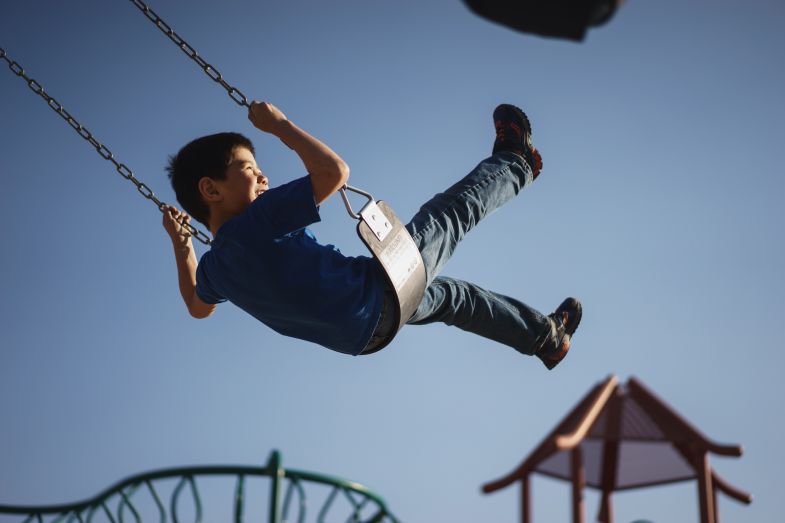
23jun
Risky play is in the spotlight in childcare, including ours. But what is it exactly? Think of all the exciting, challenging and adventurous forms of play where there’s a risk of minor physical injury. Like crawling up the stairs by yourself, swinging hard or having a stick fight. Risky play is something children do naturally and from which they learn a lot. Children like to explore and find out what their limits are.
‘I have value’ is one of the principles in our pedagogic policy. This means that we start from every child’s own strength and observe carefully to see if, and if so, which support a child needs. We give children freedom and confidence to make their own choices, to make mistakes and to take acceptable risks.
Our goal is to guide children to grow up to be independent, social and resilient individuals. By excluding all risks, we actually do children an injustice, because learning to assess risks themselves is important for the development of young children.

Risky play can take place in different ways. The youngest children experience excitement by watching other children light a campfire or balance on a tree trunk. This is called vicarious risk and this is how children learn to deal with a certain challenge without being in danger themselves.

Older children like to do exciting things by themselves, playing with dangerous objects, for instance. Children enjoy cutting with sharp scissors, cooking or working with tools such as a hammer or saw. It’s a good idea to supervise children in this, rather than having them secretly figure it out.
Pulling and pushing games, playing at heights, out of sight of parents or in dangerous places are also forms of risky play.
Risky play may sound scary or dangerous, but it’s actually extremely good for children's development. Did you know that you can prevent long-term injuries by letting children take risks at an early age?
When children dare to take on challenges and learn to push boundaries, they’ll become more motorically skilled, self-confident and self-reliant. They learn to overcome fears and develop perseverance.
Furthermore, children learn to assess risks better if they come up with their own solution to a challenge. By learning from their own mistakes, children are less likely to make the same mistake in the future.

And if an attempt does succeed, this will give an enormous boost to a child's self-confidence.
So, let your child romp, bump, climb high and run. If this results in a bump or graze, it’ll be a great learning experience!